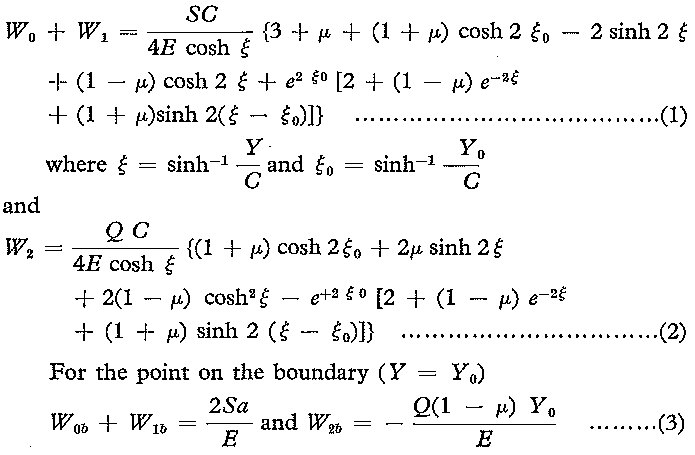Discussion at Technical Session No. 9—Rock Mechanics
Allowing for the scatter inherent to the rock, these deformations were geometrically similar to and showed a similar relationship to the changing height of the opening as those in the photo-elastic models.
The photo-elastic tests showed that in the design of underground power stations the quasi-elastic deformations of the openings should be considered particularly if the horizontal rock pressures are high, one of the dangers being an excessive stressing of the concrete roof structure. In such areas, observations of deformations during excavation of exploratory tunnels (eg., on the lines of para. 8 of the paper) may serve best for estimating of deformation of the main excavations.
Of the factors which may affect the rock deformation in different areas of underground halls an important but less obvious one is the difference in the radial stresses, e.g., between the arched roof where the radial stresses in the rock can be high, and the plane walls, where the stresses normal to the surface remain small for a large depth.
The measurement of rock deformations at the sides of the slots in the flat jack tests, in addition to those “across the slot” provides, at a small cost, valuable data for evaluation for “inelastic” deformations during the test and as internal cross-check of test results.
Mr. Worotnicki said that the expressions given in paragraphs 6 and 8 of the paper which appertain to openings of finite width are approximate or in cases of displacements w and w2, appear to be incorrect, though for thin slots the errors involved are small.
From the known general solution for the case of an elliptical opening in a thin plate by Kolossoff-Stevensen,(3) Mr. Worotnicki obtained the following expressions for the displacements of points on the axis of symmetry OY of an elliptical opening with semi—axis (A, Y0):
The notation is the same as in the paper—

For the infinitely thin slot the equation (1) becomes identical with the solution given in the paper.
He had investigated the applicability of the formulae for displacements in a thin plate for analysis of displacements during a flat jack test in a plane wall of an underground excavation using a three-dimensional rubber mode1 of flat jack set-up.
The displacements of the points near the slot due to application of the jack pressure in the model were about 15 per cent less than predicted by the two-dimensional analysis. For the “cutting of the slot”-stage, the displacements in the model were smaller by about 10 per cent. The model load was in the direction normal to the slot, producing a uniform unidirectional stress field.
The same model was used to investigate the effect of the variation of the stress magnitude with the distance “from the surface” i.e., along the slot depth. According to the photo—elastic tests such variations can be quite large in small tunnels.
In the tests carried out the stresses declined linearly with the distance from the surface.
The “cancellation jack pressures” corresponded to the stress at about one-third of the slot depth behind the surface.
